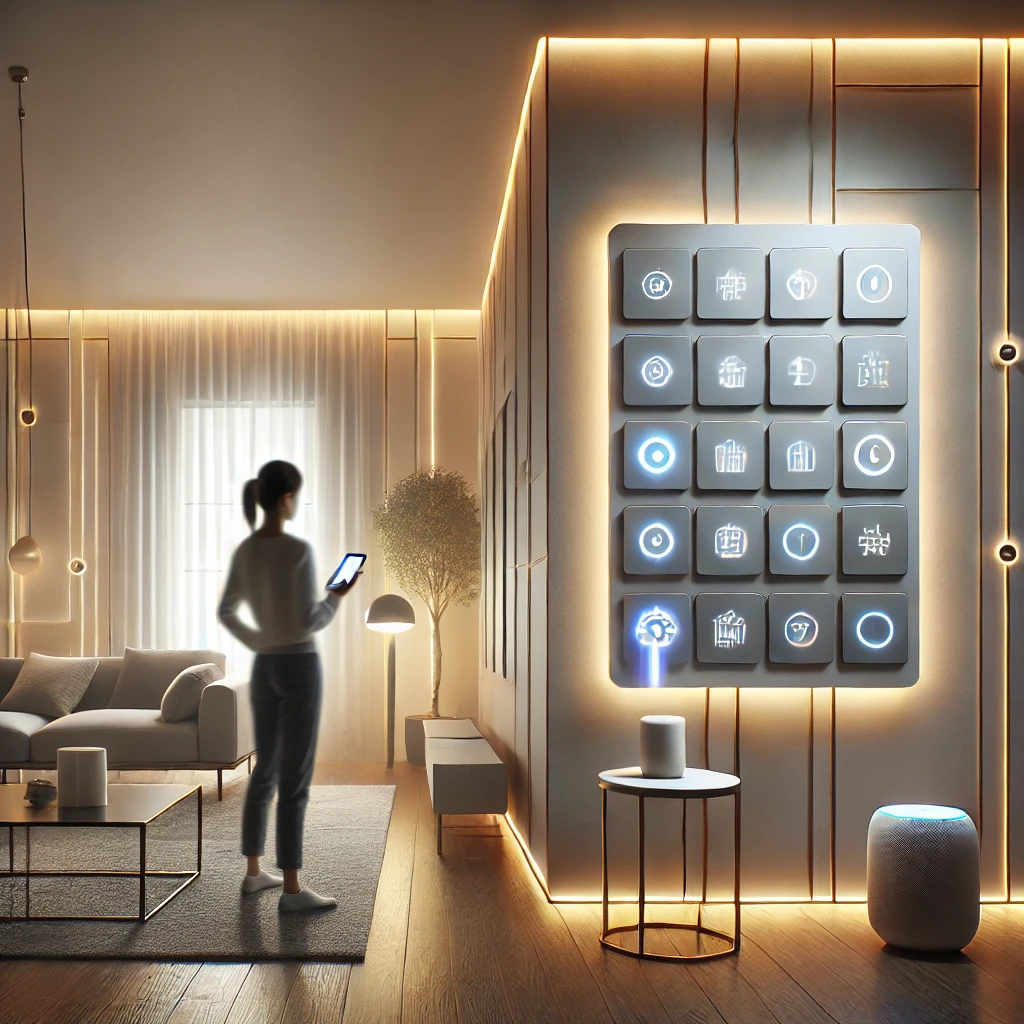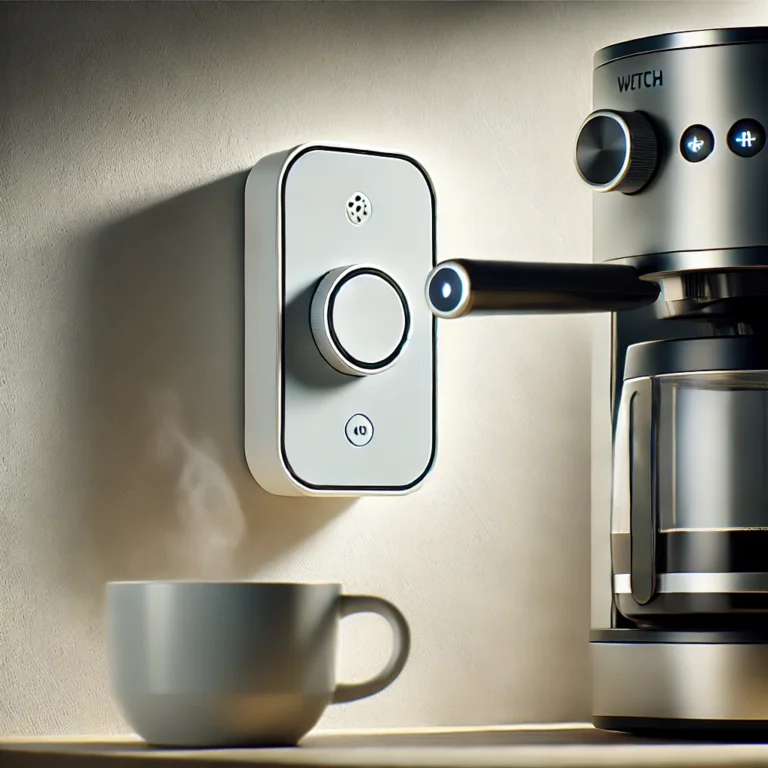How To Automate My Light Switches in 2024 – Best Light Switches To Pick!
If you are looking to get into home automation one of the easiest ways of doing this and best starting points are your light switches.
This means that you will be able to control your lights via an app and you can also connect to a hub to control other devices in your home.
This post will let you know what an automated light switch will do for you, it will also help you find the features that you need when you are picking one and it will give you a look at some of the best choices.
If you are in a hurry you can click here and check out our number one recommended automated light switch for 2024.

What is an Automated Light Switch?
An automated light switch, often referred to as a smart light switch, is a device that allows you to control your lights remotely through a smartphone app, voice command, or even a pre-set schedule. These switches replace traditional wall switches and integrate with your home’s electrical wiring.
With an automated light switch, you can easily turn your lights on or off, dim them, or set specific lighting scenes without needing to physically interact with the switch itself. Some advanced models also offer additional features such as motion detection, energy monitoring, and integration with other smart home devices.
Features to Look for in an Automated Light Switch
When choosing an automated light switch, there are several key features to consider to ensure it meets your needs and integrates well with your existing smart home setup:
Compatibility: Make sure the switch is compatible with your existing light bulbs (e.g., LED, incandescent, CFL) and the wiring in your home. Some switches require a neutral wire, while others do not.
Connectivity: Look for switches that support the wireless protocol used in your home, such as Wi-Fi, Zigbee, Z-Wave, or Bluetooth. This ensures seamless communication with your smart home hub or other devices.
Voice Control: Many smart switches are compatible with voice assistants like Amazon Alexa, Google Assistant, or Apple HomeKit, allowing you to control your lights using voice commands.
Dimming Capability: If you want to adjust the brightness of your lights, choose a switch that offers dimming capabilities. This feature is particularly useful for creating different moods or saving energy.
Scheduling and Automation: The ability to set schedules and automate your lighting based on specific triggers (such as time of day or motion detection) adds convenience and can enhance home security.
Energy Monitoring: Some smart switches come with built-in energy monitoring features that allow you to track how much electricity your lights are using, helping you make more energy-efficient choices.
Depending on your budget you can also adjust the features above to go after the features you need. For instance if you want to save money you might go for a light switch that does not give you energy monitoring or voice control – this light switch may be controlled through an app.
Below we have put some of our best choices for an automated light switch in 2024 to get you started.
3 Best Automated Light Switches in 2024
Here are three of the best automated light switches available in 2024, each offering unique features and benefits:
Lutron Caseta Wireless Smart Lighting Dimmer Switch
Compatibility: Works with a wide range of light bulbs, including LED, incandescent, and halogen. No neutral wire is required, making it suitable for older homes.
Connectivity: Uses Lutron’s proprietary wireless technology, which is highly reliable and does not interfere with Wi-Fi networks.
Voice Control: Compatible with Amazon Alexa, Google Assistant, and Apple HomeKit.
Features: Offers dimming capability, scheduling, and geofencing, allowing lights to turn on or off based on your location.
Pros: Easy to install, very reliable, and excellent range of smart features.
Cons: Requires a separate Lutron Caseta bridge for full functionality.
Kasa Smart Wi-Fi Light Switch by TP-Link
Compatibility: Supports LED, incandescent, and CFL bulbs. Requires a neutral wire.
Connectivity: Uses Wi-Fi, eliminating the need for a hub.
Voice Control: Works with Amazon Alexa and Google Assistant.
Features: Simple scheduling, away mode for added security, and an intuitive app interface.
Pros: Affordable, easy to install, and does not require a hub.
Cons: Does not support Apple HomeKit and requires a neutral wire.
GE Enbrighten Z-Wave Plus Smart Light Switch
Compatibility: Suitable for various bulb types, including LED, incandescent, halogen, and CFL. Requires a neutral wire.
Connectivity: Utilizes Z-Wave technology, ideal for homes with an existing Z-Wave network.
Voice Control: Compatible with Amazon Alexa and Google Assistant via a Z-Wave hub.
Features: Supports multi-switch setups (3-way or 4-way), dimming, and scene control.
Pros: Reliable Z-Wave connectivity, supports multiple switch configurations, and is compatible with various smart home hubs.
Cons: Requires a Z-Wave hub for operation and might be more complex to install for beginners.
You can also check out reviews for each of the products above through the links below.
Considerations When Connecting to a Hub
When integrating automated light switches into your smart home, it’s essential to consider how they will connect to your existing smart home hub or network. Here are some factors to keep in mind:
Protocol Compatibility: Ensure that the smart switches use the same wireless protocol as your smart home hub (Wi-Fi, Zigbee, Z-Wave, etc.). Mixing different protocols can lead to compatibility issues and require additional bridges or hubs.
Hub Capacity: Some smart home hubs have a limit on the number of devices they can manage. If you have or plan to have a large number of smart devices, ensure your hub can accommodate them.
Network Interference: Devices that operate on the same frequency (such as Wi-Fi) can interfere with each other, causing connectivity issues. Choose devices and hubs that minimize interference or operate on different frequencies.
Security: Ensure that your hub and smart switches offer robust security features, such as encrypted communication and regular firmware updates, to protect your home network from potential threats.
Conclusion
Automating your light switches in 2024 is easier and more beneficial than ever, with a range of smart options available to suit different needs and preferences.
By choosing the right automated light switch and considering compatibility with your existing smart home setup, you can enhance your home’s convenience, energy efficiency, and security.
Whether you opt for the versatile Lutron Caseta, the affordable Kasa Smart, or the reliable GE Enbrighten, you’ll be taking a significant step towards a smarter, more connected home.
Be sure to check out some of the reviews that we have on the site automated light switches, when ready you can also check out our home automation hub reviews as they will pair nicely with your light switch.
